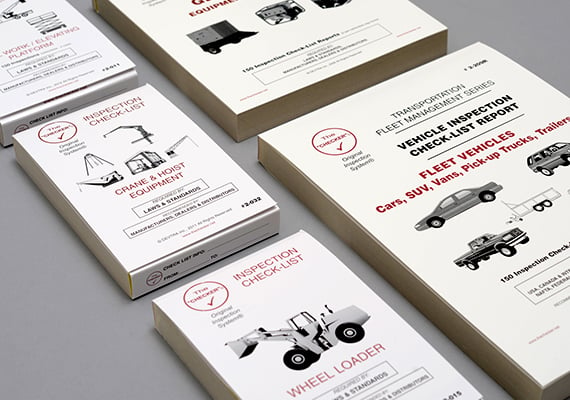An inspection checklist, when used properly, is an assurance that a particular piece of equipment has been inspected. As each item on the checklist is ticked off, the person doing the inspection is verifying that each component of the equipment is in correct working order.
To be effective, a checklist needs to be specific to the type of equipment being inspected, with each component necessary for proper operation being inspected.
Checklists should be comprehensive, but they should also be designed simply, with items in an order that’s logical to the way each type of equipment will actually be inspected. They should be easy to use, or they probably won’t get used.
Checklists have traditionally only been available on paper, but now you can use checklists digitally, with inspections being done directly on mobile devices in the field, and the data being immediately saved and assimilated for easy reporting.
A Trail of Responsibility
Inspection checklists are all about accountability. Consider the following scenarios, each of which illustrates the importance of checklists.
- An accident occurs due to faulty equipment, and investigators (and lawyers!) want to see proof that the equipment was in good working order and had been properly maintained.
- Government inspectors arrive and are blown away when detailed inspection records for each piece of equipment are readily available.
- An equipment operator goes through the checklist at the beginning of a shift and discovers a problem that wasn’t previously reported. The operator notes this deficiency on the checklist and so doesn’t come to “own” the problem.
- Some part of the equipment isn’t working right—and it gets worse and more costly to fix each time it’s used—but no one notices because it’s not immediately obvious, and there’s no inspection checklist to direct anyone to check it out. In other words, no one’s accountable for making sure that all of the equipment is working as it should.
Pencil Whipping
You can find very inexpensive and very generic checklists, and you may have already tried them, only to find that they aren’t used—at least not for long. In the field, they end up just getting pencil whipped. When that happens, everyone can say inspections have been done, but they really haven’t.
With generic checklists, you’re paying people to pretend like they’re doing thorough inspections, but you’re not getting any of the benefits of thorough inspections, such as lower maintenance costs, less equipment down time, and greater worker safety.
And when push to comes to shove in any legal or regulatory situation, generic checklists aren’t very reassuring. You’ll want equipment-specific checklists to demonstrate beyond any doubt that you’re actually checking all that needs checking.
Another great benefit of equipment-specific checklists is that they typically lead to an attitude transformation. The folks in the field begin to take inspections more seriously because it’s clear the company is taking inspections seriously. And before long they realize that inspections are a real tool to increase safety and efficiency.











